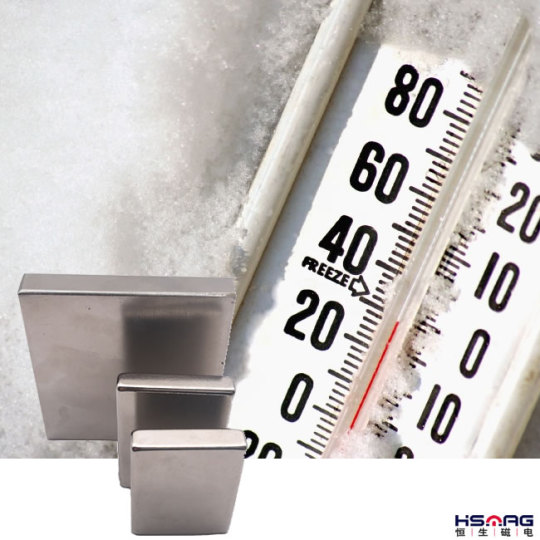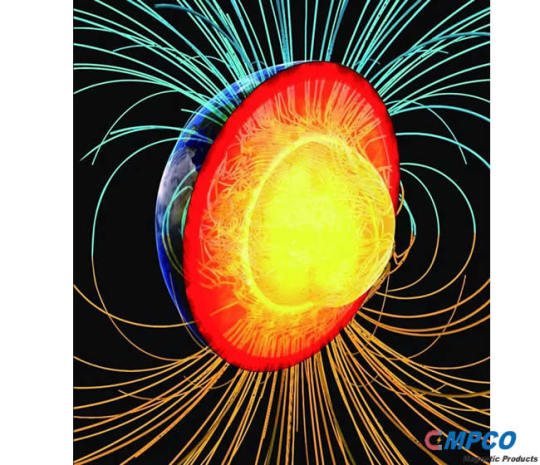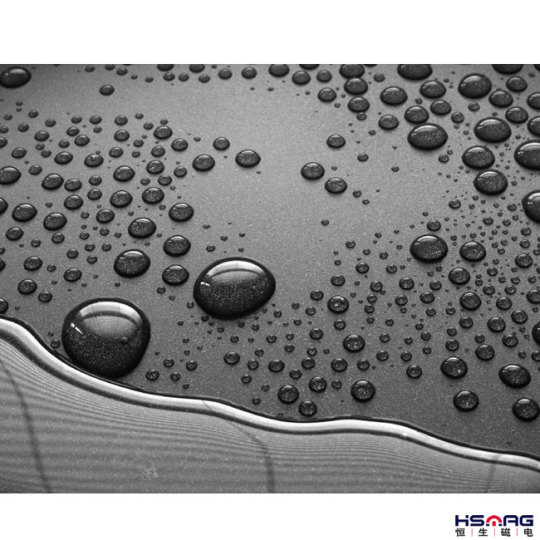#neodymium iron boron
Text
MP Materials begins construction of magnetics plant
MP Materials begins construction of magnetics plant, cements supply agreement with GM
MP Materials has begun construction on its previously announced rare earth metals, alloys and magnet manufacturing facility in Fort Worth, Texas, marking a significant return to magnet manufacturing in North America. The company said that it will invest US$700 million in the next two years to fully restore the…

View On WordPress
#magnet composition#Magnet Maker#Magnetic alloy#magnetic field#magnetic fields#magnetic force#magnetic material#Magnetic Metals#magnetic properties#magnetic structures#magnetics plant#Magnetic powder#Magnetism#Nd-based magnets#Nd-Fe-B magnets#Nd2Fe14B#NdFeB analysis#NdFeB permanent magnet#Neodymium iron boron#Neodymium magnets#paramagnetic materials#Permanent Magnet#Rare Earth Magnets#rare earth metals#Sintered NdFeB#Sintered NdFeB Magnets#Super Magnets
10 notes
·
View notes
Text
Working With Magnets in High or Low Temperatures
Working With Magnets in High or Low Temperatures
The ambient temperature surrounding your magnets during work impact their strength significantly, but each magnetic material is different. Which magnet works best in your conditions?
High or Low Temperatures | Get the Right Magnets for Your Application in High or Low Temperatures
Temperature and magnetic strength have a turbulent relationship.
Some…

View On WordPress
#Alnico magnets#Ceramic Ferrite Magnets#Ceramic magnets#electromagnets#ferrite magnets#General Questions#licensed neodymium magnets#magnet question#magnetic domains#neodymium iron boron#Neodymium magnets#permanent magnets#Protect Magnets#rare earth magnets#Rare Earths#Samarium Cobalt magnets#Stainless Steel Case Magnets#Stainless Steel Magnetic
0 notes
Text

Scientists simulate magnetization reversal of Nd-Fe-B magnets using large-scale finite element models
NIMS has succeeded in simulating the magnetization reversal of Nd-Fe-B magnets using large-scale finite element models constructed based on tomographic data obtained by electron microscopy.
Such simulations have shed light on microstructural features that hinder the coercivity, which quantifies a magnet's resistance to demagnetization in opposing magnetic fields. New tomography-based models are expected to guide toward the development of sustainable permanent magnets with ultimate performance.
Green power generation, electric transportation, and other high-tech industries rely heavily on high-performance permanent magnets, among which the Nd-Fe-B magnets are the strongest and most in demand. The coercivity of industrial Nd-Fe-B magnets is far below its physical limit up to now. To resolve this issue, micromagnetic simulations on realistic models of the magnets can be employed.
Read more.
#Materials Science#Science#Magnetism#Neodymium#Iron#Boron#Computational materials science#Tomography
14 notes
·
View notes
Text
why do i suddenly have the tom lehrer elements song stuck in my head. i haven't listened to or thought about it in ten years
#there's antimony arsenic aluminum selenium and hydrogen and oxygen and nitrogen and rhenium...#and nickel neodymium neptunium germanium and iron americium ruthenium uranium#europium zirconium... something idk... and lanthanum and osmium and astatine and radium.... i think?#how the hell am i remembering all this. it's coming back to me as i type#AND BORON PROTACTINIUM IRIDIUM AND GALLIUM#[DEEP BREATH] AND IODINE AND FLUORIDE AND THULIUM AND THALLIUM#[piano jingle]
1 note
·
View note
Text

Elemental Haiku by Mary Soon Lee
Hydrogen, Hydrogen, Hydrogen, Hydrogen, Helium, Lithium, Beryllium, Boron, Boron, Carbon, Carbon, Nitrogen, Oxygen, Oxygen, Oxygen, Fluorine, Fluorine, Neon, Neon, Sodium, Magnesium, Magnesium, Aluminum, Silicon, Phosphorus, Sulfur, Sulfur, Chlorine, Argon, Potassium, Calcium, Scandium, Titanium, Vanadium, Chromium, Chromium,
Manganese, Manganese, Iron, Iron, Cobalt, Nickel, Nickel, Copper, Zinc, Zinc, Zinc, Gallium, Germanium, Germanium, Arsenic, Selenium, Selenium, Bromine, Krypton, Rubidium, Strontium, Yttrium, Yttrium, Yttrium, Zirconium, Niobium, Molybdenum, Molybdenum, Technetium, Ruthenium, Ruthenium, Ruthenium, Rhodium, Rhodium, Palladium, Silver, Cadmium, Indium, Tin, Antimony, Tellurium,
Iodine, Xenon, Caesium, Caesium, Caesium, Barium, Lanthanum, Lanthanum, Cerium, Cerium, Praseodymium, Neodymium, Promethium, Promethium, Samarium, Europium, Gadolinium, Terbium, Dysprosium, Holmium, Erbium, Thulium, Thulium, Thulium, Thulium, Ytterbium, Lutetium, Hafnium, Tantalum, Tungsten, Rhenium, Osmium, Iridium, Platinum, Gold, Mercury, Mercury,
272 notes
·
View notes
Note
There's Hydrogen and Helium
Then Lithium, Beryllium
Boron, Carbon everywhere
Nitrogen all through the air
With Oxygen so you can breathe
And Fluorine for your pretty teeth
Neon to light up the signs
Sodium for salty times
Silicon
(Phosphorus, then Sulfur) Chlorine and Argon
(Potassium) And Calcium so you'll grow strong
(Scandium) Titanium, Vanadium and Chromium and Manganese
This is the Periodic Table
Noble gas is stable
Halogens and Alkali react aggressively
Each period will see new outer shells
While electrons are added moving to the right
Iron is the 26th
Then Cobalt, Nickel coins you get
Copper, Zinc and Gallium
Germanium and Arsenic
Selenium and Bromine film
While Krypton helps light up your room
Rubidium and Strontium then Yttrium, Zirconium
Molybdenum, Technetium
(Ruthenium) Rhodium, Palladium
(Silver-war) Then Cadmium and Indium
(Tin-cans) Antimony then Tellurium and Iodine and Xenon
And then Caesium and
Barium is 56, and this is where the table splits
Where Lanthanides have just begun
Lanthanum, Cerium and Praseodymium
Neodymium's next to
Promethium, then 62's
Samarium, Europium, Gadolinium and Terbium
Dysprosium, Holmium, Erbium, Thulium
Ytterbium, Lutetium
Hafnium, Tantalum, Tungsten then we're on to
Rhenium, Osmium and Iridium
Platinum, Gold to make you rich till you grow old
Mercury to tell you when it's really cold
(Thallium) And lead then Bismuth for your tummy
(Polonium) Astatine would not be yummy
(Radon) Francium will last a little time
(Radium) then Actinides at 89
This is the Periodic Table
Noble gas is stable
Halogens and Alkali react aggressively
Each period will see new outer shells
While electrons are to the right
Actinium, Thorium, Protactinium
Uranium, Neptunium, Plutonium
Americium, Curium, Berkelium
Californium, Einsteinium, Fermium
Mendelevium, Nobelium, Lawrencium
Rutherfordium, Dubnium, Seaborgium
Bohrium, Hassium then Meitnerium
Darmstadtium, Roentgenium, Copernicium
Nihonium, Flerovium
Moscovium, Livermorium
Tennessine and Oganesson
And then we're done
Wonderful job
#rottmnt#rottmnt donnie#rise of the teenage mutant ninja turtles#rise donnie#unpause rise of the tmnt#rise of the tmnt#rottmnt leo#rise leo#disaster twins#save rise of the tmnt
45 notes
·
View notes
Text
THE IDEA
There are 118 elements in the periodic table. The elements are as follows:
Hydrogen, Helium, Lithium, Beryllium, Boron, Carbon, Nitrogen, Oxygen, Fluorine, Neon, Sodium, Magnesium, Aluminium, Silicon, Phosphorus, Sulfur, Chlorine, Argon, Potassium, Calcium, Scandium, Titanium, Vanadium, Chromium, Manganese, Iron, Cobalt, Nickel, Copper, Zinc, Gallium, Germanium, Arsenic, Selenium, Bromine, Krypton, Rubidium, Strontium, Yttrium, Zirconium, Niobium, Molybdenum, Technetium, Ruthenium, Rhodium, Palladium, Silver, Cadmium, Indium, Tin, Antimony, Tellurium, Iodine, Xenon, Caesium, Barium, Lanthanum, Cerium, Praseodymium, Neodymium, Promethium, Samarium, Europium, Gadolinium, Terbium, Dysprosium, Holmium, Erbium, Thulium, Ytterbium, Lutetium, Hafnium, Tantalum, Tungsten, Rhenium, Osmium, Iridium, Platinum, Gold, Mercury, Thallium, Lead, Bismuth, Polonium, Astatine, Radon, Francium, Radium, Actinium, Thorium, Protactinium, Uranium, Neptunium, Plutonium, Americium, Curium, Berkelium, Californium, Einsteinium, Fermium, Mendelevium, Nobelium, Lawrencium, Rutherfordium, Dubnium, Seaborgium, Bohrium, Hassium, Meitnerium, Darmstadtium, Roentgenium, Copernicium, Nihonium, Flerovium, Moscovium, Livermorium, Tennessine, Oganesson
There happen to be 10 categories in the periodic table:
Other nonmetals, Alkali metals, Transition metals, Post-transition metals, Metalloids, Alkaline earth metals, Noble gases, Halogens, Lanthanoids, and Actnoids.
Seeing as there are ten options max in tumblr polls, I have decided to make a tournament for every single element in the periodic table. I will give fun facts about each element when they appear in the tournament. When there are ten options left (one for each category), they will all go against each other in one final poll to determine the best element in the periodic table.
I am not starting right away but I will start eventually.
23 notes
·
View notes
Note
There's antimony, arsenic, aluminum, selenium
And hydrogen and oxygen and nitrogen and rhenium
And nickel, neodymium, neptunium, germanium
And iron, americium, ruthenium, uranium
Europium, zirconium, lutetium, vanadium
And lanthanum and osmium and astatine and radium
And gold protactinium and indium and gallium
And iodine and thorium and thulium and thallium
There's yttrium, ytterbium, actinium, rubidium
And boron, gadolinium, niobium, iridium
And strontium and silicon and silver and samarium
And bismuth, bromine, lithium, beryllium, and barium
There's holmium and helium and hafnium and erbium
And phosphorus and francium and fluorine and terbium
And manganese and mercury, molybdenum, magnesium
Dysprosium and scandium and cerium and cesium
And lead, praseodymium and platinum, plutonium
Palladium, promethium, potassium, polonium
And tantalum, technetium, titanium, tellurium
And cadmium and calcium and chromium and curium
There's sulfur, californium and fermium, berkelium
And also mendelevium, einsteinium, nobelium
And argon, krypton, neon, radon, xenon, zinc and rhodium
And chlorine, carbon, cobalt, copper, tungsten, tin and sodium
These are the only ones of which the news has come to Harvard
And there may be many others, but they haven't been discovered!
Huh
2 notes
·
View notes
Note
There's antimony, arsenic, aluminum, selenium
And hydrogen and oxygen and nitrogen and rhenium
And nickel, neodymium, neptunium, germanium
And iron, americium, ruthenium, uranium
Europium, zirconium, lutetium, vanadium
And lanthanum and osmium and astatine and radium
And gold protactinium and indium and gallium
And iodine and thorium and thulium and thallium
There's yttrium, ytterbium, actinium, rubidium
And boron, gadolinium, niobium, iridium
And strontium and silicon and silver and samarium
And bismuth, bromine, lithium, beryllium, and barium
There's holmium and helium and hafnium and erbium
And phosphorus and francium and fluorine and terbium
And manganese and mercury, molybdenum, magnesium
Dysprosium and scandium and cerium and cesium
And lead, praseodymium and platinum, plutonium
Palladium, promethium, potassium, polonium
And tantalum, technetium, titanium, tellurium
And cadmium and calcium and chromium and curium
There's sulfur, californium and fermium, berkelium
And also mendelevium, einsteinium, nobelium
And argon, krypton, neon, radon, xenon, zinc and rhodium
And chlorine, carbon, cobalt, copper, tungsten, tin and sodium
These are the only ones of which the news has come to Harvard
And there may be many others, but they haven't been discovered!
…very nice?
4 notes
·
View notes
Note
Now for another silly question for the Beasts:
Which of the songs by Tom Lehrer is your favorite?
"There's antimony, arsenic, aluminum, selenium, and hydrogen and oxygen and nitrogen and rhenium, and nickel, neodymium, neptunium, germanium, and iron, americium, ruthenium, uranium!
Europium, zirconium, lutetium, vanadium, and lanthanum and osmium and astatine and radium, and gold, protactinium, and indium and gallium, and iodine and thorium and thulium and thallium!"

"There's yttrium, ytterbium, actinium, rubidium, and boron, gadolinium, niobium, iridium, and strontium and silicon and silver and samarium, and bismuth, bromine, lithium, beryllium, and barium!"

"Don't forget lawrencium, rutherfordium, dubnium, seaborgium, bohrium, hassium, meitnerium, darmstadtium, roentgenium, copernicium, nihonium, flerovium, moscovium, livermorium, tennessine, and oganesson, none of which had been discovered when the song was written."

"There's holmium and helium and hafnium and erbium, and phosphorus and francium and fluorine and terbium, and manganese and mercury, molybdenum, magnesium, dysprosium and scandium and cerium and cesium!"

"And lead, praseodymium and platinum, plutonium, palladium, promethium, potassium, polonium, and tantalum, technetium, titanium, tellurium, and cadmium and calcium and chromium and curium!"

"There's sulfur, californium and fermium, berkelium, and also mendelevium, einsteinium, nobelium, and argon, krypton, neon, radon, xenon, zinc and rhodium, and chlorine, carbon, cobalt, copper, tungsten, tin and sodium!"

They all turn to look at the remaining beasts.
"No."

". . ."

They all squint.






Dark Beast sighs.
"These are the only ones of which the news has come to Harvard, and there may be many others, but they haven't been discovered . . ."

#Anonymous#verse: all-new#verse: earth's mightiest!#verse: hated and feared#verse: getting by#verse: each of us is a nest of lies#verse: another time and another place#verse: I wait to wake
6 notes
·
View notes
Text
Why Does High-temperature Liquefied Iron Nucleus Produce a Huge Magnetic Field?
Bar Magnet Heating Will Lose Magnetism, Why Does High-temperature Liquefied Iron Nucleus Produce a Huge Magnetic Field?
The atoms in the magnet are arranged neatly in accordance with certain rules, which is why magnets have magnetic reasons. When heating the magnet, the arrangement of the atom is disrupted and the magnetic is reduced. When heating to 770 ° C, the magnet loses magneticity.
Why…

View On WordPress
#AI Magnets#Cerium Magnets#cerium-containing magnets#Grain Boundary Diffusion#high-performance magnetic materials#Magnet Maker#magnetic field#magnetic fields#magnetic force#magnetic material#Magnetic Materials#Magnetic Phenomena#magnetic properties#magnetic treatment#Magneticity#NdFeB Magnet#NdFeB permanent magnet#NdFeB Surface Treatment#Neodymium iron boron#Neodymium Magnet Applications#Permanent Magnet Materials#Permanent Magnets#Rare Earth Magnets#rare earth permanent magnet#Sintered NdFeB#Sintered NdFeB Magnets#Super Magnets
2 notes
·
View notes
Text
How to Protect Magnets from Corrosion
How to Protect Magnets from Corrosion
Magnets are susceptible to corrosion, but we can do a lot to protect them from it. If your magnets might operate in a corrosive environment (in the presence of moisture), get them protected.
Protect your investment. Protect your magnets from corrosion.
Many magnets react to moisture by rusting. When a magnet is corroded by rust, it loses a large portion of…

View On WordPress
#General Questions#licensed neodymium magnets#magnet question#magnetic domains#neodymium iron boron#Neodymium magnets#permanent magnets#Protect Magnets#rare earth magnets#Rare Earths#Stainless Steel Case Magnets#Stainless Steel Magnetic
0 notes
Photo





The Neodymium-Iron-Boron Ternary System
Phase Poll #10 wrapped up yesterday with the final result as 42.5% Fe, 30% Nd, and 27.5% B. This ternary system is most well known for neodymium-iron-boron magnets, so we’re going to spend a little bit of time discussing those before we narrow in on the chosen composition.
Nd-Fe-B magnets are permanent magnets with the composition of Nd2Fe14B, considered to be an intermetallic, and a tetragonal crystal structure. (Permanent magnets are those materials which are magnetized and create their own magnetic field, such as refrigerator magnets.) These neodymium magnets are the most widely used rare earth magnets and have numerous applications, including in computers, speakers, door locks, electric generators, among countless others. These magnets are typically produced either through powder metallurgy and sintering, or through melt spinning.
The chosen composition results in another stoichiometric, intermetallic phase, NdB4. Its space group is P4/bmb, meaning it crystalizes with a tetragonal crystal structure as well. On their own, there is little interest in neodymium boron compounds in the literature.
Sources/Further Reading: ( 1 ) ( 2 - image 2 ) ( 3 - image 3 ) ( 4 - images 4 and 5 )
More phase diagrams: ( image 1 ) ( 500K ) ( 1000K ) ( 1500K ) ( 2000K )
30 notes
·
View notes
Text
"Magnetic levitation is already employed in systems such as Maglev trains, flywheels and high-speed machinery. Now researchers at the Technical University of Denmark have given this old technology a fresh twist by explaining how a magnet can be levitated simply by rotating another magnet of a similar size near it. This unusual effect was first demonstrated by an electronics/computer and software engineer, Hamdi Ucar, in 2021, and the TU-Denmark team say it could be exploited in the contactless handling of objects or used to trap and manipulate ferromagnetic microparticles.
There are three main types of magnetic levitation. In the first, known as active magnetic stabilization, a control system supplies the magnetic force required keep the levitating object balanced. The second, termed electrodynamic suspension, is used in Maglev trains. Here, a moving magnet induces a current in a stationary conductor, producing a repulsive force that increases with the speed of the moving magnet. The last category, called spin-stabilized levitation, features a levitating magnet that spins at around 500 revolutions per minute (rpm) and remains stable thanks to the gyroscopic effect.
The new type of levitation involves two magnets. The first, dubbed the “rotor”, is mounted on a motor with its north and south poles oriented perpendicular to its rotation axis and made to rotate at velocities of around 10 000 rpm. In the TU-Denmark team’s experiments, this magnet was spherical, 19 mm in diameter and made from neodymium-iron-boron.
The second magnet – the “floater” – is placed near the rotor, begins to spin automatically, and then moves towards the rotor until it hovers in space a few centimetres below it. The floater precesses with the same frequency as the rotor and its magnetization is oriented close to the axis of rotation and towards the like pole of the rotor magnet. If disturbed, a restoring force moves it back to its equilibrium position.
“It is quite surprising that magnetic levitation develops in such as relatively simple system,” says Rasmus Bjørk, a physicist at TU-Denmark who led the study together with Frederik Laust Durhuus and Joachim Marco Hermansen."
"“It is intuitive to all that the magnetostatic force that one magnet exerts on another can be both attractive and repulsive,” explains Durhuus. “Without rotation, the free magnet will rotate so the force becomes purely attractive and then the magnets will collide into each other. What makes the new magnetic levitation system so special is that the rotation itself allows the floater to remain in a counterintuitive configuration, nearly perpendicular to the rotor’s field, where the magnetostatic force both attracts and repels it.”
continue reading article
#levitation#magnetism#magnetic levitation#rotation#counter rotation#spinning#gyroscopic effect#energy#electromagnetism#physics#north and south poles#polarity#dipolar coupling#science#technology#discovery
2 notes
·
View notes
Text
Brazil starts to tap its rare earth reserves
A rare earth mining project nearing completion in the midwestern state of Goiás has the potential to kickstart the development of a rare earth industry in Brazil, market participants said

The Mineração Serra Verde project, owned by energy transition-focused private equity firm Denham Capital, is in the final stages of commissioning and is scheduled to launch ionic clay rare earth production by the end of this year.
Planned phase 1 output is large by industry standards, at around 5,000 tonnes per year of rare earth oxides contained in concentrate. Importantly, this will include both the light rare earths neodymium and praseodymium and the heavy rare earths dysprosium and terbium, which are all needed for high-performance neodymium iron boron (NdFeB) magnets for the engines of electric vehicles (EVs).
Neodymium and praseodymium are used in the largest amount in NdFeB magnets, but trace quantities of dysprosium and terbium are critical for maintaining the performance of these magnets at high temperatures inside an EV engine.
Global production of heavy rare earth ores is concentrated in Myanmar, and supply is frequently disrupted. This is accelerating the search for new sources of supply to meet growing demand from the automotive sector.
Continue reading.
3 notes
·
View notes
Text
hydrogen helium lithium beryllium boron carbon nitrogen oxygen fluorine neon sodium magnesium aluminum silicon phosphorus sulfur chlorine argon potassium calcium scandium titanium vanadium chromium manganese iron cobalt nickel copper zinc gallium germanium arsenic selenium bromine krypton rubidium strontium yttrium zirconium niobium molybdenum technetium ruthenium rhodium palladium silver cadmium indium tin antimony tellurium iodine xenon cesium barium lanthanum cerium praseodymium neodymium promethium samarium europium gadolinium terbium dysprosium holmium erbium thulium ytterbium lutetium hafnium tantalum tungsten rhenium osmium iridium platinum gold mercury thallium lead bismuth polonium astatine radon francium radium actinium thorium protactinium uranium neptunium plutonium americium curium berkelium californium einsteinium fermium mendelevium nobelium lawrencium rutherfordium dubnium seaborgium bohrium hassium meitnerium darmstadtium roentgenium copernicium nihonium flerovium moscovium livermorium tennessine oganesson
7 notes
·
View notes